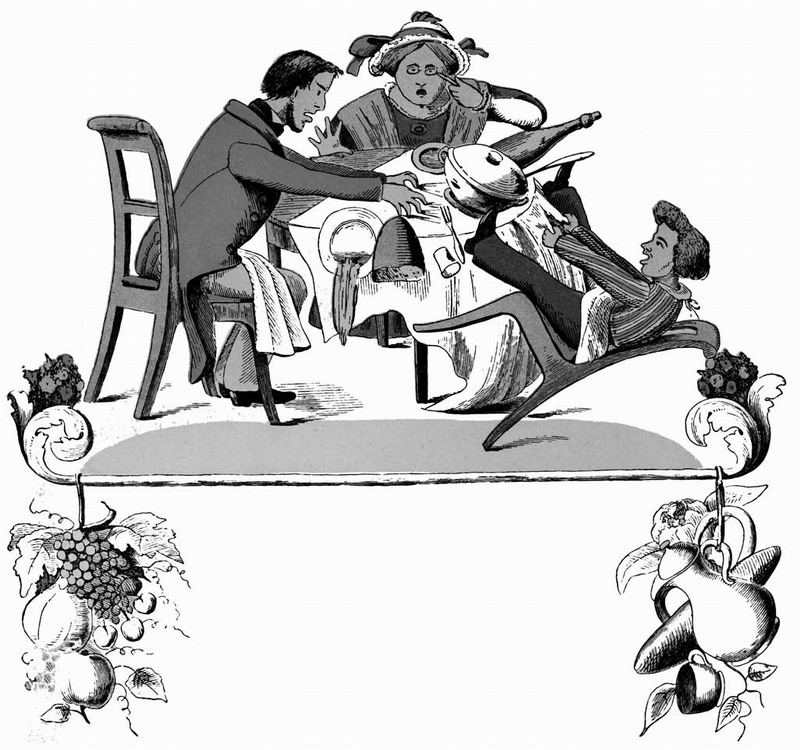Children with difficulties in attention and impulsivity have been recognized since the mid-1800s (i.e., as compulsory school attendance became the rule). The 19th century book Struwwelpeter, a “morality” book for children by Heinrich Hoffmann, included the tales of Fidgety Philip, who could not sit still, and Johnny Look-in-the-Air, who could not pay attention. The observation of difficulties after viral encephalitis in the early 20th century led to a presumption that these problems arose as a result of some subtle or “minimal” brain damage; Bradley’s observation in the 1930s that such children could improve their attention after administration of amphetamine led to one of the first pharmacologic treatments for childhood mental disorders. This led to use of terms like minimal brain dysfunction to describe the condition even though evidence of gross brain damage was not demonstrable. Beginning in the 1970s, other terms, such as hyperkinetic child syndrome, began to be used. By 1980, the term attention-deficit disorder began to be used as was, subsequently, the term attention-deficit hyperactivity disorder (ADHD), although the current International Classification of Diseases (ICD-10) term, hyperkinetic disorder, emphasizes activity more than attention, reflecting continued controversies over how best to conceptualize this condition.
DEFINITION AND CLINICAL FEATURES
The syndrome of ADHD is characterized by problems with inattention, overactivity, and impulsivity along with other deficits in the set of skills usually termed
executive functioning. The latter are a range of abilities involved in forward planning. Although similar in some ways, there are differences in approach between the
Diagnostic and Statistical Manual (DSM-IV-TR) and ICD-10. Both approaches provide a list of 18 symptoms that can involve both attentional problems and hyperactivity (the combined type) or only inattention
or impulsivity. In DSM-IV TR, the hyperactive type requires at least six of nine symptoms of overactivity, and the inattentive requires at least six of nine listed symptoms of inattention. In the combined type, six of each are required. The ICD-10 approach emphasizes the overactivity aspect. It is also, on balance, more stringent in making the diagnosis. The ICD-10 also adopts a different approach to the issue of frequent comorbidity associated with ADHD, including a special code for co-association with conduct problems (hyperkinetic conduct disorder). These approaches to diagnosis are summarized in
Table 8.1. Within the DSM-IV-TR, the distinctions between the subtypes can be subtle, and debate continues about the best approach to conceptualizing
the condition(s). For example, some children with predominately inattentive symptoms may be less active. It is the case that children whose difficulties relate to overactivity are likely to be more disruptive and thus may be more frequently referred for treatment and earlier diagnosis. For a diagnosis of ADHD to be made, the symptoms must be present in more than one setting, must have started before age 7 years, must cause significant impairment, and cannot be exclusively attributable to another disorder or be better accounted for by it. As a practical matter, multiple sources of information are, accordingly, needed.
The degree to which any one (or none) of the three major areas of difficulty—overactivity, inattention, and impulsivity—will color the diagnostic presentation. Similarly, the child’s age and levels of functioning are very important; for some children, difficulties only become apparent because of the age-expected demands placed by school for concentration and attention. A lack of precision regarding how “often” a behavior or feature must be present and how “persistent” it is means that there is considerable clinical judgment involved in making the diagnosis. Finally, the frequent presence of comorbid conditions, such as learning difficulties, conduct problems, language problems, and so forth, frequently complicates the clinical picture and can have important implications for treatment. For some children, the burden of
significant attentional and activity problems takes a toll on affective regulation as well as on peer relationships and social development. There has been growing awareness that, for many children, symptoms of overactivity may lessen with time, but attentional problems may persist. As a result, in adulthood, many individuals may continue to experience difficulties, although their impairment may be less immediately obvious.
In the office setting, the difficulties with attention and impulsivity may not seem markedly different than those in other children, although when a child’s difficulties are severe, they are often noted even in office settings. For school-age children, problems with overactivity may be most dramatic in less structured settings (e.g., gym or recess), and problems with attention are reflected in academic areas. Rating scales, checklists, and some psychological tests (discussed subsequently) may be useful in helping to clarify the diagnosis. More complex academic tasks, which require organizational skills and forward planning, are particularly impacted by problems in attention and impulsivity. This is often reflected in forgotten homework or many different projects started but never finished and can be demonstrated on psychological testing. As a practical matter, the clinician should keep in mind the core features of the condition—hyperactivity, inattention, and impulsivity—and have a reasonable sense of what is and is not within the normal range for a child of a given age.
By definition in the DSM-IV-TR, the disorder must have its onset before age 7 years. Determination of the actual age of onset is difficult because these data are invariably retrospective in nature. Most of the time, parents will have noted some difficulties in the preschool period, when the child may have had a “driven” quality as she or he rapidly explored the room. Often, parents provide detailed reports of outings and parties during which the child’s difficulties have led to major disruptions. In situations in which the major difficulties relate to sustained attention and organization, it may be only as the child enters school when
difficulties pose a serious obstacle for learning and lead to diagnosis. Some children have difficulty remaining seated during class. Even in situations such as recess and sports, the child’s difficulties with attention and impulsivity may take a toll on social relationships. Difficulties may continue into adulthood.










